Transforming Early Childhood Development Centers into Vibrant Public Spaces
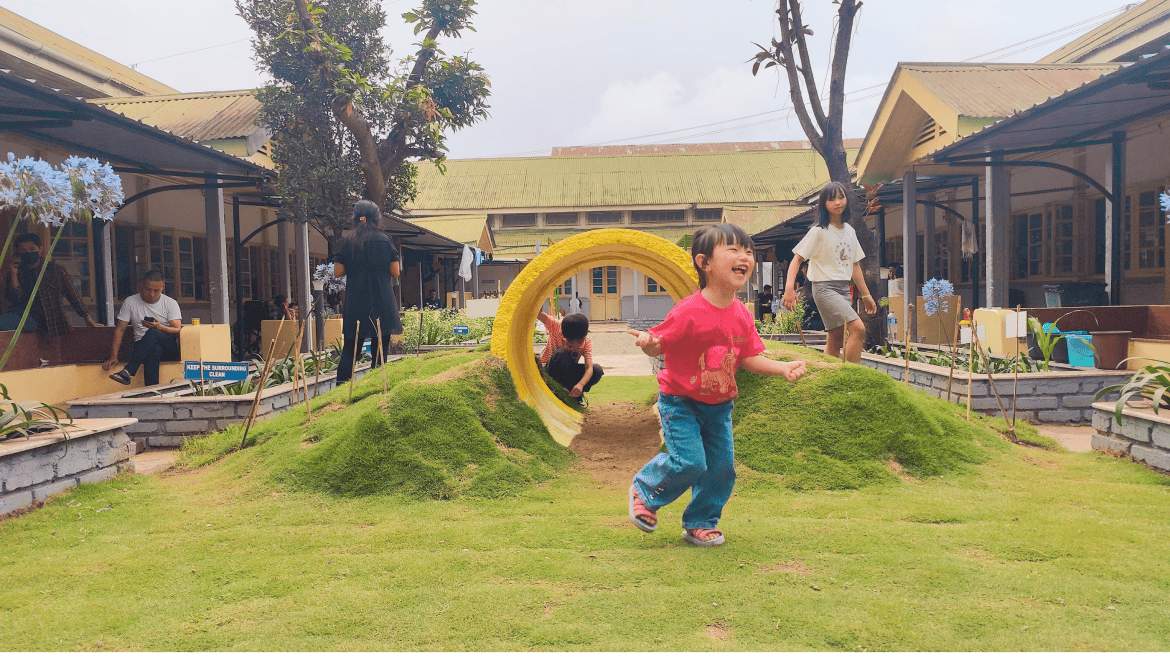
This is the third blog in a three-part series on creating children-and-caregiver-friendly public spaces. It explores how cities can overcome urban challenges to foster such spaces. Read the first blog and the second blog in the series.
Early Childhood Development (ECD) centers in India, primarily government-led Anganwadis (early childhood play and learning centers) and primary health centers, provide basic nutritional, learning and healthcare facilities for young children (0-5 years) from low-income communities. While these centers focus on the children’s physical and social development, there is an opportunity to enhance their maintenance and add more comforts and engaging elements. Improving these aspects can encourage caregivers to spend more time in these spaces and motivate families to send their children to the centers.
Identifying this gap, the Nurturing Neighbourhoods Challenge (NNC) has enabled 10 winning cities across India to reassess the potential of ECD centers and reimagine them as thriving public spaces. Here are six ways in which the cities of Kochi, Bengaluru, Indore, Jabalpur, Rourkela, Kohima, Warangal, Vadodara, Kakinada and Hubbali Dharwad are shaping their neighborhoods –
-
Developing Playful Angans in Anganwadis
Cities such as Kochi, Vadodara, Indore and Bengaluru are rejuvenating Anganwadis by revamping their angans (adjacent open spaces). They are using front yards, backyards and terrace spaces to provide comfortable waiting areas and carve out play spaces (play angans) for young children.
Renovated play angan in Calvathy, Fort Kochi with vibrant play opportunities, comfortable seating and an interactive abacus on the railings. Photo credits: Visakha KA & Amy Rachel Joseph/WRI India. 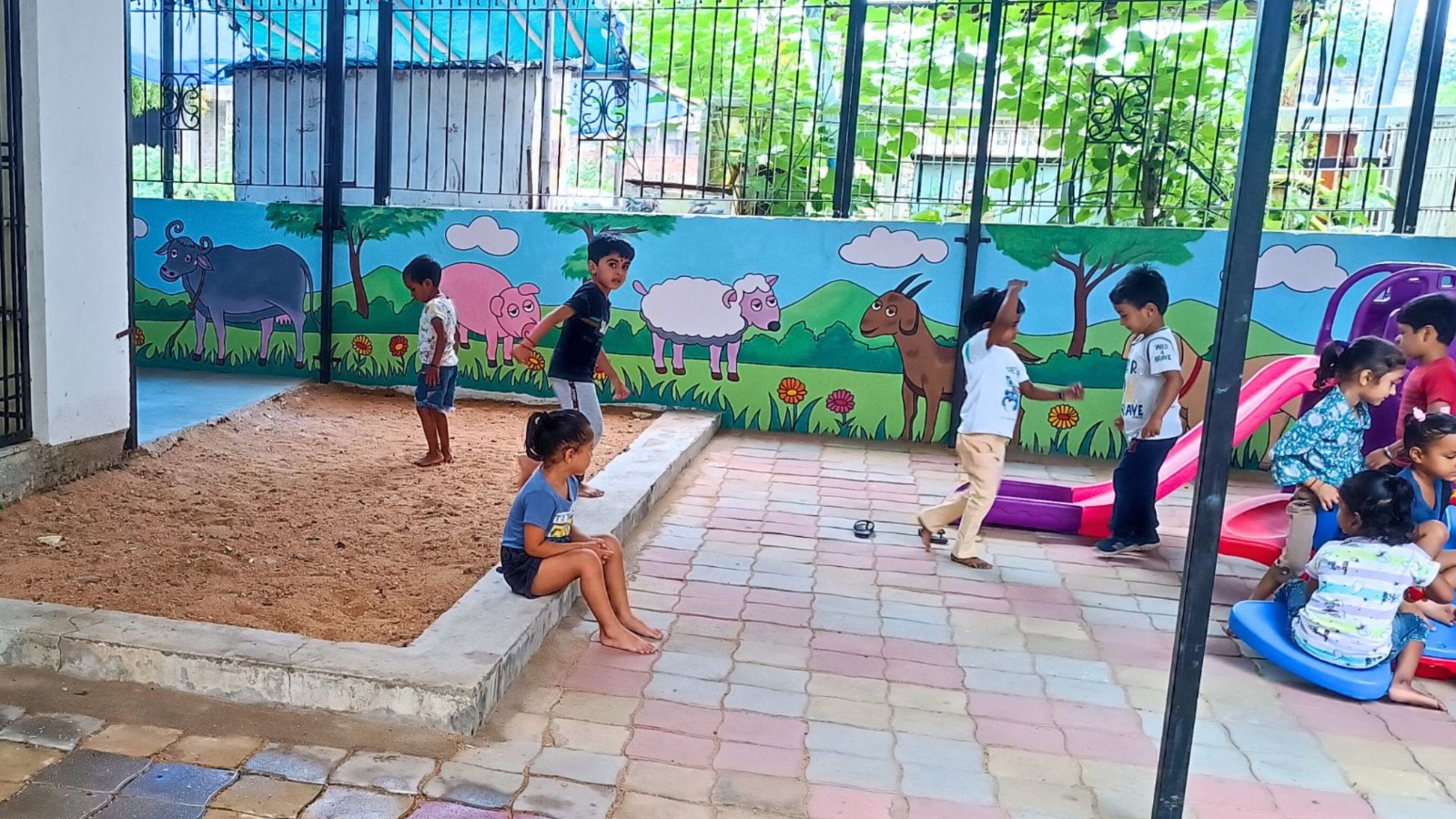
Revamped Anganwadi in Vadodara with outdoor play spaces. Photo credit: Arunima Sen/WRI India -
Making Primary Health Centers and Anganwadis user-friendly with Age-Specific Amenities
Bengaluru has adopted a child-friendly design that can be replicated by ECD centers across India. This model includes multi-height seating spaces, child-height railings and wash basins, herb gardens and playful pockets, all aimed at creating a stimulating and safe experience for young children and their caregivers.
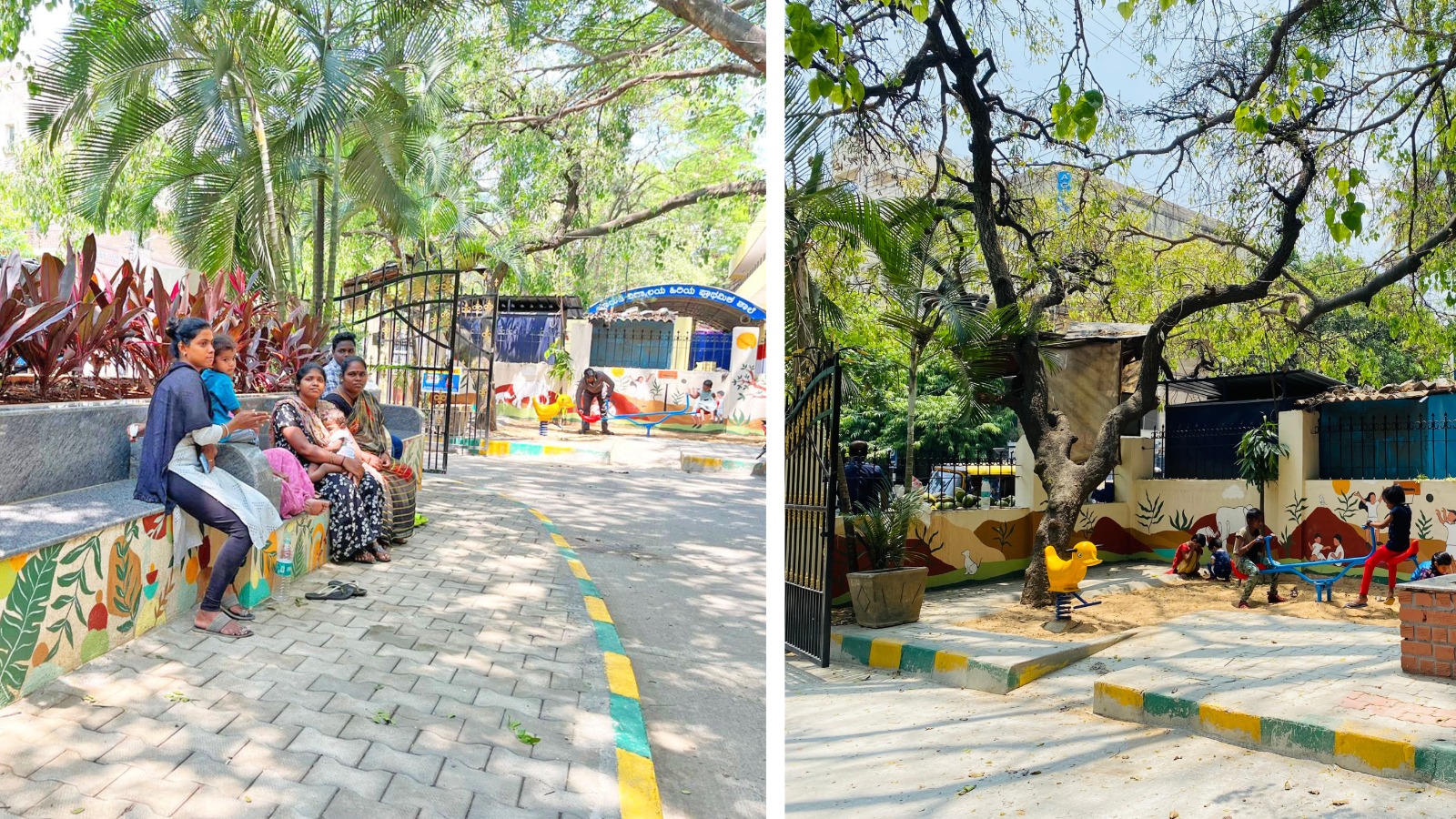
Multi-height seating and play spaces at BBMP maternity home in Bengaluru. Photo credit: Directorate of Urban Land Transport (DULT) 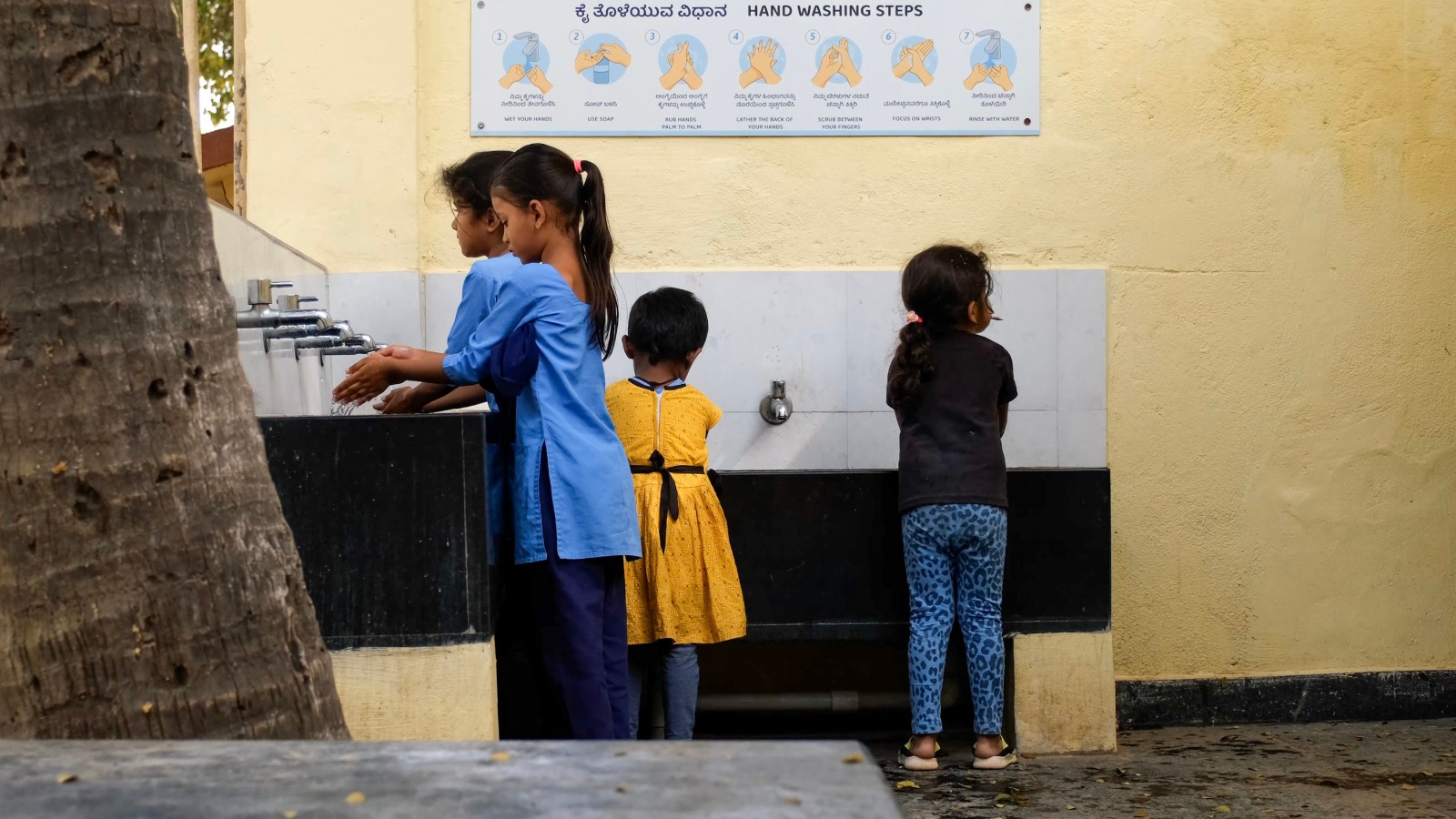
Low-heighted hand wash facilities for young children at Ulsoor Anganwadi in Bengaluru. Photo credit: WRI India -
Creating Play Opportunities at Nutrition Rehabilitation Centers
Nutrition rehabilitation centers (NRCs) cater to children under 5 years with severe malnutrition. The city of Jabalpur is receiving much appreciation from medical practitioners for taking the initiative to transform NRCs. Gunjan Jain, a nurse at the Ranjhi NRC, remarked, “Children come to the NRC for nutritional care, but now, due to the added play space, we are seeing an improvement in their mental health (play therapy). The child-friendly environment puts children and their caregivers at ease, relieving the stress of being around medical centers.”
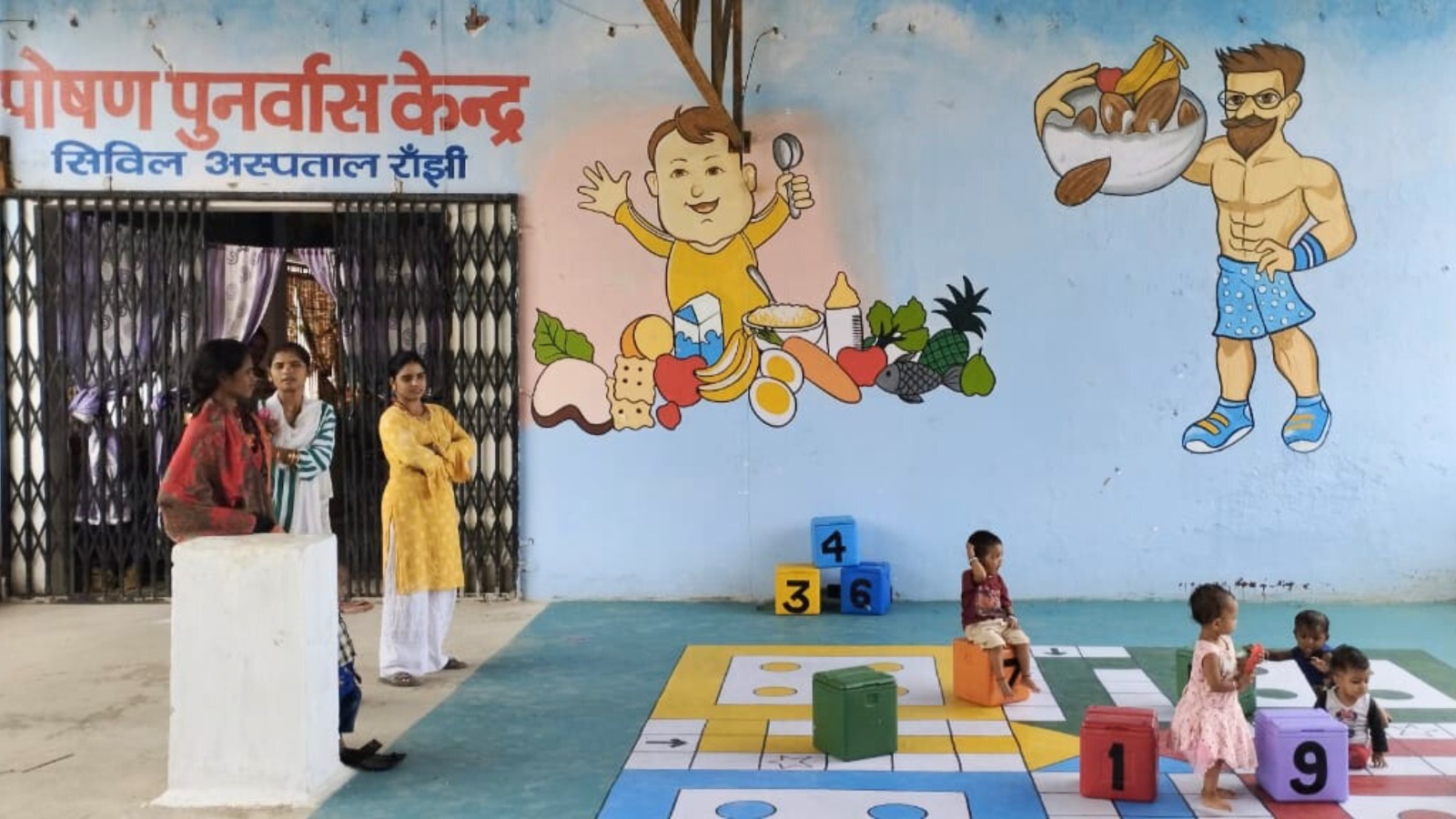
Play space created on the terrace for young children and caregivers at Ranjhi NRC in Jabalpur. Photo credit: Jabalpur Smart City Limited -
Integrating Natural Play Elements in Anganwadis
Cities such as Indore are encouraging young children to explore natural play. They are creating play settings by integrating wooden logs, stepping-stones, bird-feeders, trees and herbal/kitchen gardens. These natural play settings enable rich sensory play opportunities aiding the cognitive development of young children.
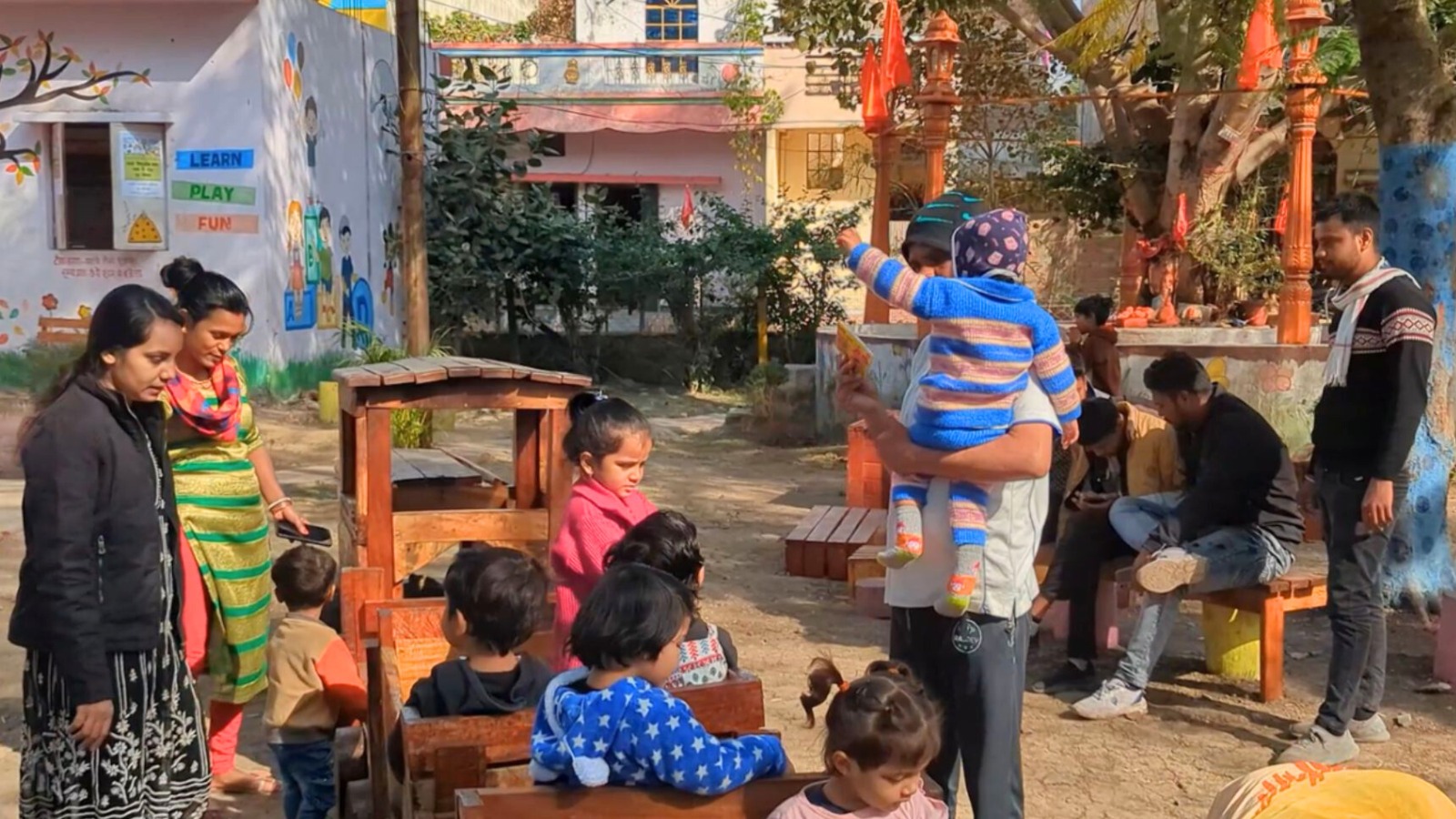
Outdoor play with sand pit and wooden play elements created in Sanskriti Nagar Anganwadi in Indore. Photo credit: WRI India -
Clustering Diverse Amenities around ECD Centers
While authorities work to improve public health centers and Anganwadis, such spaces function better when clustered with other community spaces. One such example lies in the city of Rourkela, that integrates an Anganwadi center, a mobile library, an open play space, an open gym and a micro activity center. This multi-functional ECD cluster caters to nearby vulnerable settlements. It today serves as a community anchor, enabling all age groups to use the public space simultaneously – improving residents’ social wellbeing and enhancing their overall sense of safety.
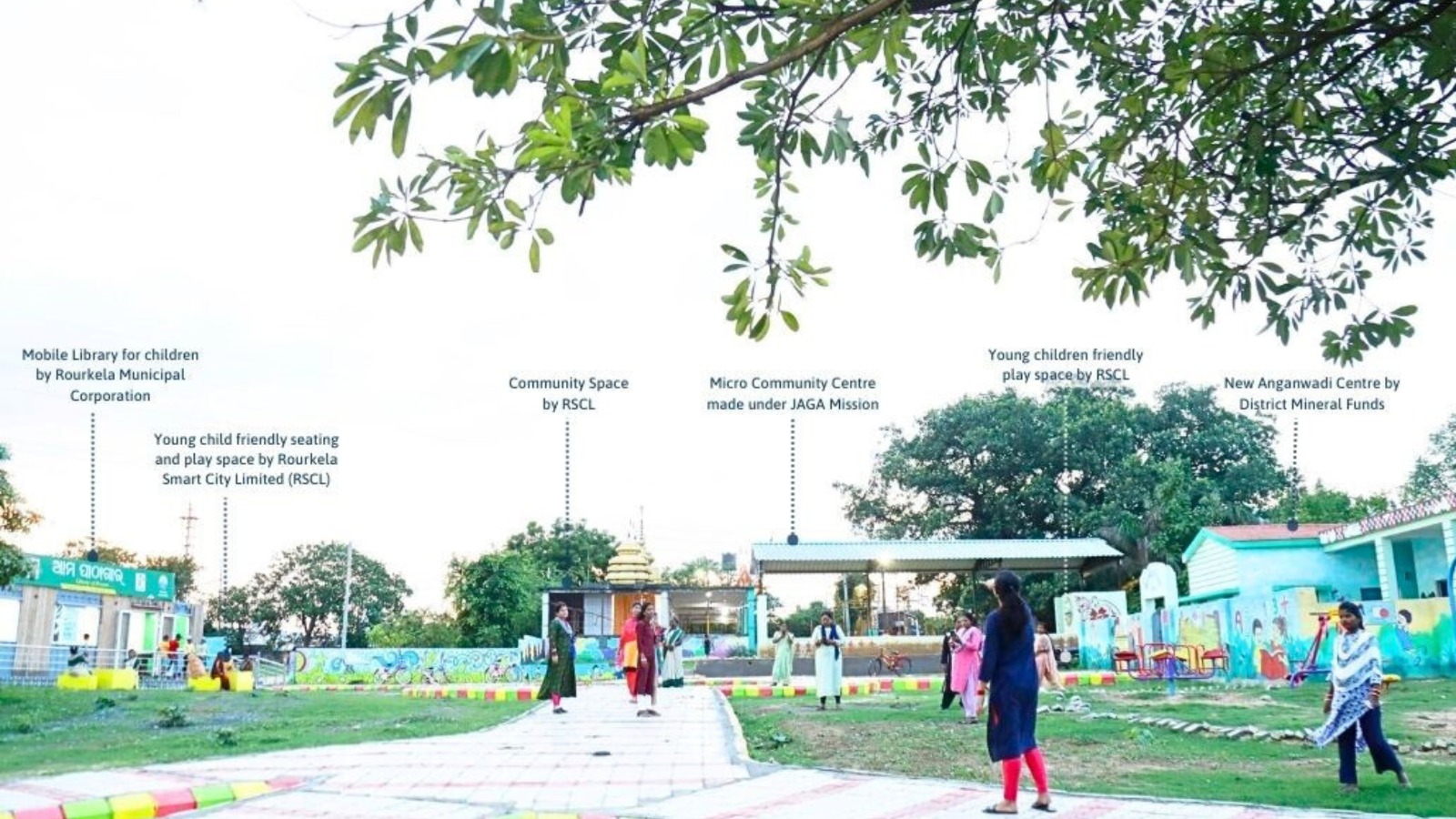
Clustering of ECD centers at Ruputola Slum in Rourkela. Photo credit: Rourkela Smart City Limited
While there has been a marked increase in quality public spaces, across our cities, constraints of space and funding persist. The impact achieved by the Nurturing Neighbourhood Challenge's tier II cities is particularly remarkable considering authorities in these cities work under a relatively smaller budget. These spaces are now being used by the community beyond their operational hours, significantly impacting the daily lives of people residing in the neighborhood. An increase in enrollment has been seen in Anganwadis, and in some cases, caregivers have transferred their children from private schools to the government-run Anganwadi centers post their transformation. In Vadodara, Anganwadis have been enhanced by tapping into Corporate Social Responsibility (CSR) funds.
WRI India, with the support of Ministry of Housing and Urban Affairs and Van Leer Foundation, has developed guidelines and checklists to help cities replicate such spaces.
Arunima Saha is a former Program Associate with the Cities Program at WRI India.
